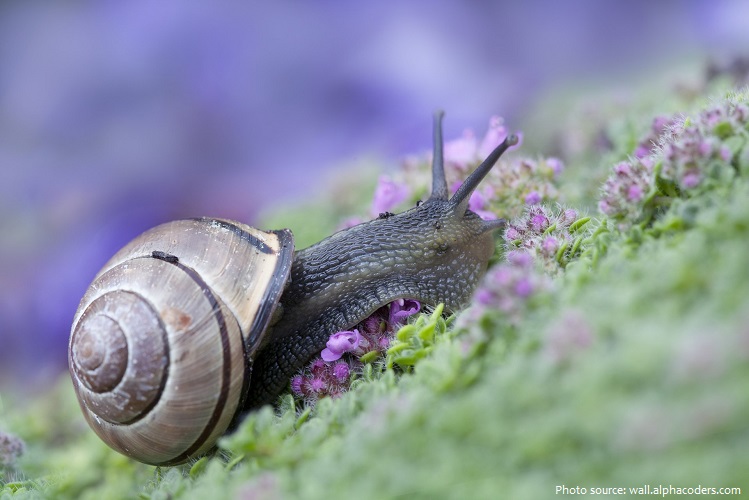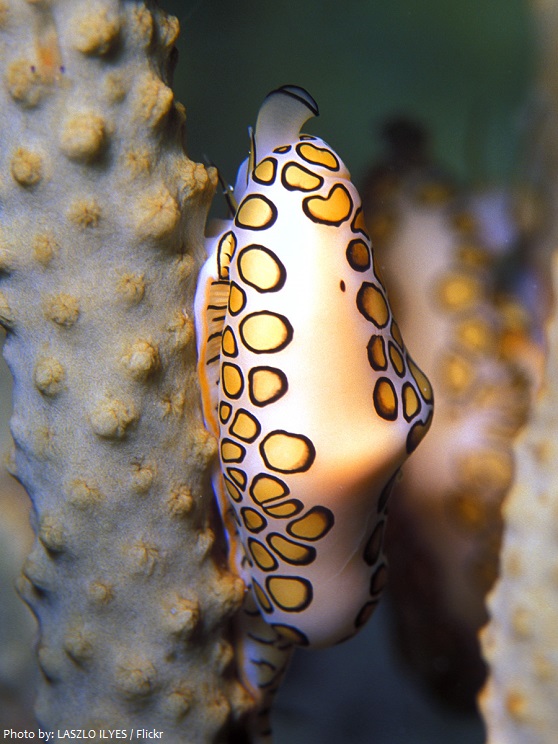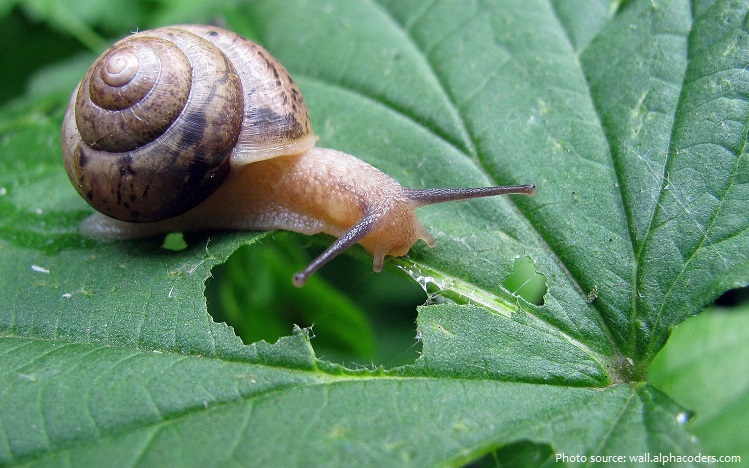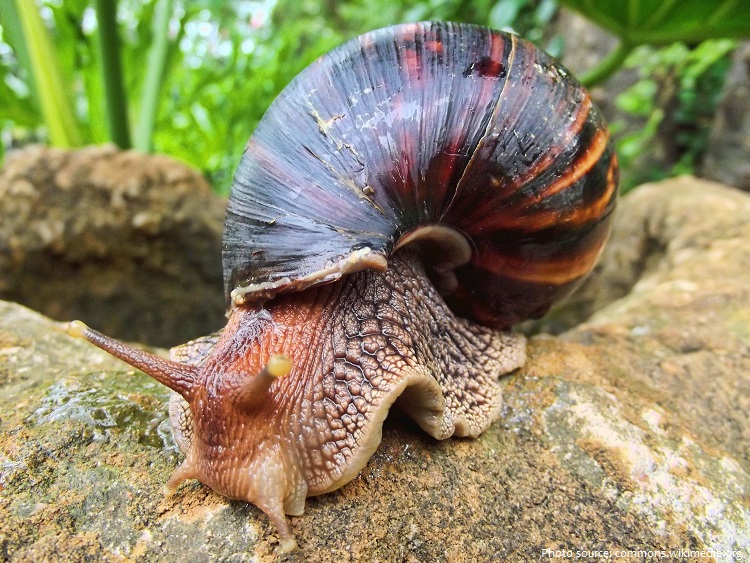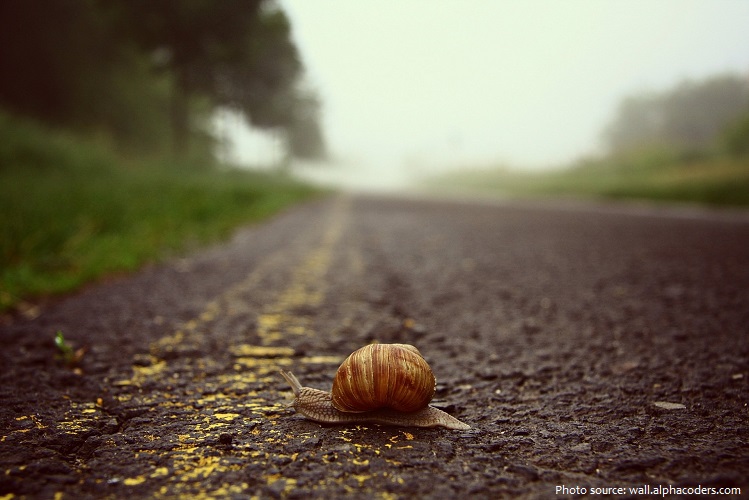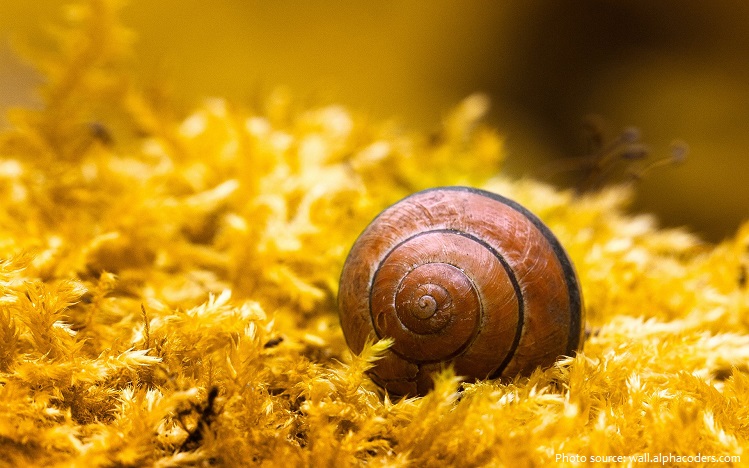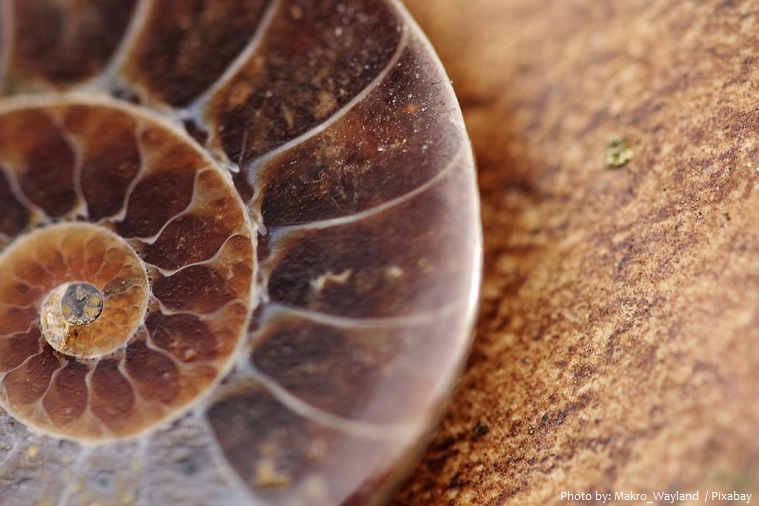Snail is the common name applied to most members of the mollusk class Gastropoda that have coiled shells.
The name is most often applied to land snails. However, the common name snail is also used for numerous species of sea snails and freshwater snails.
There are approximately 43,000 species of snails.
Land snails, although better known than other types, represent a small group. Sea snails are the most numerous and biodiverse group.
Snails are found all over the world. They live in a very wide range of environments, including marshes, deserts, mountains, ditches, bodies of fresh water and the abyssal depths of the sea.
Snail-like animals that naturally lack a shell, or have only an internal shell, are mostly called slugs.
The lifespan of snails depends on their habitat and the species. Some of them only live for about 1 to 3 years. However, others can live up to 25 years old.
The snail shell is present from the snail’s early development, is attached to the snail, and grows along with the snail in a spiral shape. A snail can’t crawl out of its shell any easier than you can walk away from your fingernails! The very center coil of a shell is where it began in life, and as the snail grows, the shell grows around and around that center in a spiral form.
Snails are strange-looking creatures with shells and large stalks sticking out of the tops of their heads. Because most snails are small, it can be difficult to see their primary features. However, snails do have eyes and vision, though the exact location of the eyes and their use depends on the specific type of snail. Snails don’t rely on sight as much as humans, but it’s still one of their senses.
Land snails have two pairs of tentacles. The two tallest tentacles have eyes at their tips. Land snails have a wider frame of vision because they’re able to move their eyes around using their tentacles.
Snails can have lungs or gills depending on the species and their habitat. Some marine snails actually can have lungs and have to come to the surface to breathe while some land based snails can have gills.
When retracted into their shells, many snails with gills (including some terrestrial species) are able to protect themselves with a door-like anatomical structure called an operculum.
Sea snails are colorful, so they can be pink, blue, red, grey, yellow and also with many other colors. The colors protect them, because this colors scare potential enemies away.
Most snails have thousands of microscopic tooth-like structures located on a ribbon-like tongue called a radula. The radula works like a file, ripping food into small pieces.
Most snails are of herbivorous nature, though a few land species and many marine species may be omnivores or carnivores.
Land snails enjoy plants, fungi and algae. They naturally congregate in fields and grassy areas.
Freshwater snails subsist largely on algae and decomposing plants, but some species also eat dead fish.
Sea snails like their freshwater cousins, may eat plant matter, namely algae, or animal matter, namely fish or other types of invertebrates.
Like most living creatures, both land and water snail species need to drink water to survive. Land snails drink from small puddles formed on leaves or on the ground, but they also get their water from the juicy leaves they eat. Marine species take saltwater when feeding, but have an excretory mechanism to eliminate excessive salt quantities they ingest.
The largest known land snail is the African giant snail (Achatina achatina), the largest recorded specimen of which measured 39.3 cm (15.5 in) from snout to tail when fully extended, with a shell length of 27.3 cm (10.75 in) in December 1978. It weighed exactly 900 g (2 lb).
The Australian trumpet or false trumpet is a sea snail measuring up to 91 centimeters (36 inches) long and weighing up to 18 kilograms (40 pounds) is the largest snail species in the world, and arguably the largest (heaviest) gastropod in the world.
The record of the world’s smallest snail is held by a mollusk found in Borneo, according to a new study. The average height of this snail is recorded at 0.7 millimeters (0.027 inches) with white and translucent shell.
Snails can only crawl. Even those that live in water can’t swim. As they crawl they secrete a slime to help themselves move across surfaces. Snails travel at speeds that vary from slow (47 meters (154 feet) per hour) to very slow (10 meters (33 feet) per hour).
It has been proven that snails sleep, but their sleeping habits are unusual compared to those of most larger and more developed animals. Rather than being part of a 24-hour day, their sleep cycle lasted two to three days. Over a period of 13 to 15 hours, snails sleep in around seven bouts. This sleeping period is followed by roughly 30 hours of activity. If they lose sleep during their normal sleeping period, they seemingly have no need to make up for it.
Hibernation in snails is an adaptation that serves a multitude of purposes. Snails in areas prone to frost or freezing temperatures will hibernate during winters. Alternatively, snails inhabiting dry, arid regions will estivate — a summer version of hibernation — when water is scarce or when droughts occur. In both situations, by secreting extra mucus and sealing themselves into their shells, snails protect themselves with trapped humidity and filtered oxygen. During this time, metabolism slows and the snails live in a suspended state until warm rains revive them.
Different snails reproduce differently, but most snails are “hermaphrodites.” Being a hermaphrodite means that any given snail can be both male and female at the same time. This can make it a lot easier for snails to reproduce and quickly make a whole lot of snails! Some hermaphrodite snails do not need another snail to reproduce, but can make more snails all by themselves (this is called asexual reproduction). Other snails are hermaphrodites but still need another snail to reproduce. There are also some snails that aren’t hermaphrodites, but are either male or female, and must find a snail of the opposite sex to breed with.
The first snail-like mollusk lived about 550 million years ago on the seafloor. Then, around 286 million years ago, some moved onto land and began breathing with lungs, instead of gills.
The snail Lymnaea makes decisions by using only two types of neuron: one deciding whether the snail is hungry, and the other deciding whether there is food in the vicinity.
The sea snail was considered a symbol of rebirth and joy for Mesoamericans, who believed the whirled shape of its shell represented the circle of life.
In some countries, like France, people eat snails. They usually boil them in salt water, and add a garlic sauce.
Snail eggs, sold as snail caviar, are a specialty food that is growing in popularity in European cuisine.
Heliciculture is the farming of snails.
Molluscophobia is the fear of members of the mollusk family, such as slugs and snails.


